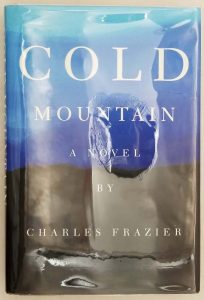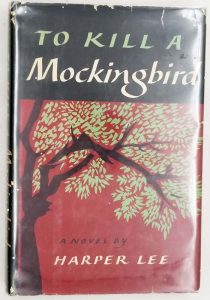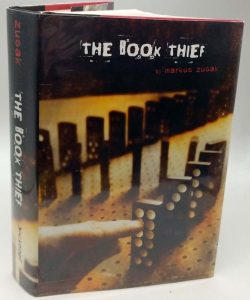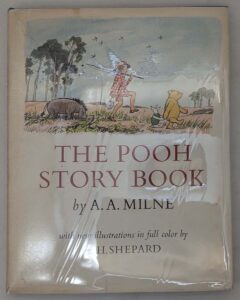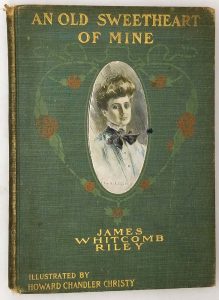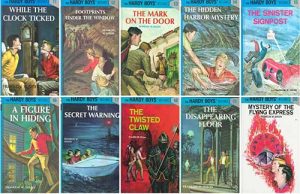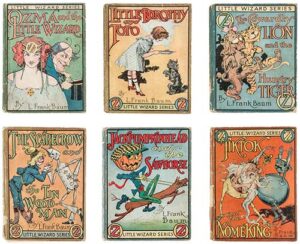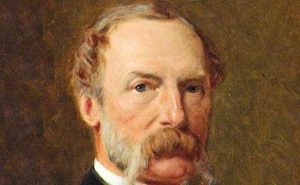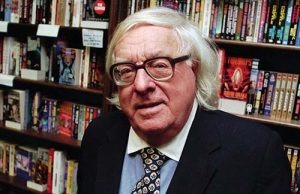Philip Pullman – British novelist and playwright, b. 1946
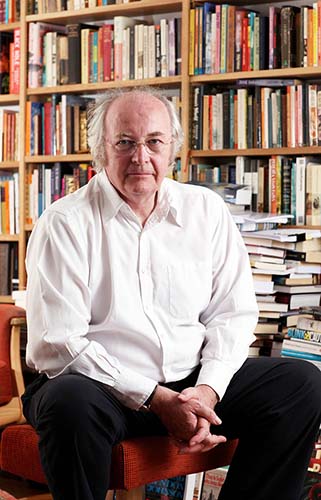
With the publication of The Ruby in the Smoke in England in 1985 (1987 in the United States), Philip Pullman, a former schoolteacher raised in Rhodesia, Australia, London, and Wales, launched his career as a writer of young adult novels. Set in London during the Victorian era, the novel relates the adventures of Sally Lockhart, an inventive, courageous sixteen-year-old who finds herself caught in dangerous intrigue when she delves into the circumstances surrounding the death of the man she believed was her father.
The setting is effectively realized in the engrossing tale, which begins a trilogy that continues with The Shadow in the North (1988), published in Great Britain in 1987 as The Shadow in the Plate, and The Tiger in the Well (1990). Sally’s character develops as she grows older, falls in love, and becomes an unwed mother who runs her own financial consulting business. Over and over she displays her resourcefulness as she meets each new threat head-on.
Pullman’s greatest strength is his ability to weave complex and riveting plots that wrap the reader in suspense. In The Shadow in the North, Sally investigates the failure of a shipping business she had recommended to one of her clients as a secure investment and uncovers not only fraud but murder and the invention of a devastating war weapon. The third book depicts Sally’s desperate efforts to find her daughter, who has been kidnapped by a man she has never before met, but who legally claims to be the child’s father. Pullman brings the trilogy to a dose by reintroducing one of the most malevolent villains of the first book.
Although the novels contain some adult sexual imagery and disturbing violence, they remain within the limits of good taste. Unfortunately, the same cannot be said of The White Mercedes (1992), in which a streetwise, sexually abused runaway is murdered due to an arbitrary string of coincidences that bring her into the path of a man attempting to kill someone else. Pullman’s descriptions of the sex and violence are unnecessarily graphic. By shifting the point of view among three characters —Jenny, the runaway, Chris, the boy she becomes romantically involved with, and Chris’s employer—Pullman forces a sense of irony on the reader by revealing the secrets each fatally hides from the others.
The critically acclaimed novel The Broken Bridge (1990 Great Britain, 1992 U.S.), which focuses more on character, represents not a departure from Pullman’s previous style, but an expansion of his technique. Ginny, a biracial teenager raised by her white father in a predominantly white community in Wales, seeks out the truth about her past and her parents and, with difficulty, adjusts to living with the brother she never knew she had.
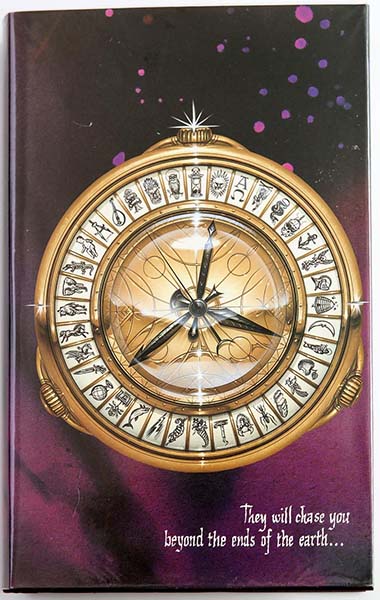
Pullman’s depiction of Ginny’s sense of alienation and search for identity provides universality and draws the reader into her life, while the tightly constructed plot offers numerous surprises that ensure that readers of Pullman’s historical fiction will not be disappointed with this modem novel. At their best, Pullman’s novels, daring and inventive, are page turners that immediately hook readers into the story and often introduce them to the Victorian age. His credits as a playwright include adaptations of Mary Shelley’s Frankenstein and of The Three Musketeers by Alexandre Dumas as well as original work.
PulIman’s greatest strength is his ability to weave complex and riveting plots that wrap the reader in suspense. Nowhere is this more apparent than in the three His Dark Materials books, in which he created a convincing world that has similarities to the known world while being quite different. fantastic, and mysterious.
In Book I, The Golden Compass (Original title Northern Lights, 1995), the orphan Lyra lives comfortably with the scholars of Oxford until two powerful visitors call on her. She begins a quest to rescue her kidnapped friend and starts a gripping, complex journey during which nothing is as it seems. The saga continues in The Subtle Knife (1997) when Will, who lives in our world, escapes pursuers by stepping through a window into another world. There he meets and joins forces with Lyra. As she carries the alethiometer, a device that identifies the truth and commands them to find Wills father, Will becomes a warrior bearing the Subtle Knife, another powerful amulet which can cut windows between worlds.
The breathtaking pace of this multifaceted novel ends inconclusively. The story begins again immediately in the third and final volume of His Dark Materials, The Amber Spyglass (2000). It is perhaps the most complicated in the trilogy, attempting to resolve issues introduced in earlier books. While The Amber Spyglass does indeed tie up dangling threads, it also unravels many. It has been suggested that this is Pullman s retelling of Paradise Lost, presenting his own contentious view of the role of world religion.
In his 1996 Carnegie Medal acceptance speech for The Golden Compass. Pullman said, “There are some themes, some subjects. too large for adult fiction; they can only be dealt with adequately in a children’s book . . . There’s more wisdom in a story than in volumes of philosophy.” The epic proportions of the trilogy are worthy of discussion in terms of both content and structure.
A.E.D & M.B.S.
Source: Children’s Books and their Creators, Anita Silvey.
Philip Pullman Works
Young adult novels
His Dark Materials series
His Dark Materials trilogy:
- Northern Lights — in US, The Golden Compass (1995)
- The Subtle Knife (1997)
- The Amber Spyglass (2000)
Companion books:
- Lyra’s Oxford (2003), novella, sequel of The Amber Spyglass
- Once Upon a Time in the North (2008), novella, prequel of Northern Lights
- “The Collectors” (2014), short story, audiobook & Kindle
The Book of Dust trilogy:
- La Belle Sauvage (2017)
- The Secret Commonwealth (2019)
- Third book (not yet published)
Sally Lockhart series
- The Ruby in the Smoke (1985)
- The Shadow in the North, first published as The Shadow in the Plate (1986)
- The Tiger in the Well (1990)
- The Tin Princess (1994)
Stand-alones
- How to Be Cool (1987)
- The Broken Bridge (1990)
- The White Mercedes (1992), re-issue as The Butterfly Tattoo (1998)
Children’s novels
The New-Cut Gang series:
- Thunderbolt’s Waxwork (1994)
- The Gas-Fitters’ Ball (1995)
Stand-alones:
- Count Karlstein (1982)
- I was a Rat! or The Scarlet Slippers (1999)
- The Scarecrow and his Servant (2004)
Other novels
- The Haunted Storm (1972)
- Galatea (1976)
- The Good Man Jesus and the Scoundrel Christ (2010), novella, part of the Canongate Myth series
Children’s short stories
Collections:
- Fairy Tales From The Brothers Grimm (2012), collection of 50 short stories
Uncollected short stories:
- Clockwork, or, All Wound Up (1995), novella
- The Firework-Maker’s Daughter (1995), novella
Children’s books
- Spring-Heeled Jack (1989)
- The Wonderful Story of Aladdin and the Enchanted Lamp (1993), picture book
- Mossycoat (1998), picture book
- Puss in Boots: The Adventures of That Most Enterprising Feline (2000), picture book
Comics
- The Adventures of John Blake (2008), in The DFC and The Phoenix Mystery of the Ghost Ship storyline collected by David Fickling Books and in hardcover by Scholastic Inc.
Plays
- Frankenstein (1990)
- Sherlock Holmes and the Limehouse Horror (1992)
- The Gas-Fitters’ Ball (1995)
